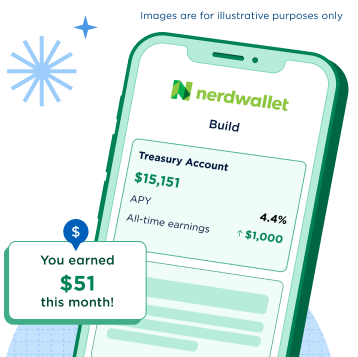How to Pay Your Taxes: 10 Ways to Make a Tax Payment in 2025
Paying your federal taxes online can be an easy and fast way to handle your bill, but there are also other ways to make an IRS payment.

Many, or all, of the products featured on this page are from our advertising partners who compensate us when you take certain actions on our website or click to take an action on their website. However, this does not influence our evaluations. Our opinions are our own. Here is a list of our partners and here's how we make money.
If you missed the deadline to pay your taxes, many payment services remain available year-round. The IRS recommends paying as much as you can, as soon as you can, to avoid racking up penalties and interest.
Taxpayers who use guided tax-prep programs or IRS Free File might be familiar with electronic funds withdrawal (EFW). This payment option comes standard with most software and allows you to submit a payment directly from your bank account when filing your return.
If you're looking to tackle your federal tax bill another way, the IRS suggests sticking to an online tax payment method, such as Direct Pay or a credit/debit card, before resorting to mail. Still, a few more payment options are available, including same-day wire and cash.
How to pay federal taxes online
1. IRS Direct Pay
IRS Direct Pay is one of the simplest and most affordable options for tackling a tax bill. You can access the free service through the IRS Direct Pay website to submit a payment directly from either your checking or savings bank account. You can also modify or cancel a payment up to two business days before it's scheduled to be processed.
You don't have to register with the agency to use the service, but you will need to verify your identity before you can submit a payment. The Direct Pay website will ask you to provide the address, Social Security number, date of birth, and filing status you submitted on a prior-year return to confirm that you are who you say you are.
Direct Pay is available to taxpayers Monday through Saturday, from midnight to 11:45 p.m. EST, and Sunday from 7 a.m. to 11:45 p.m. EST.
Cost: Free.
✔️ Pros
Can be done online.
Can schedule payments up to 365 days in advance.
Change or cancel a scheduled/pending IRS payment until two days before the payment date.
Can get email notifications about your payment.
Can make same-day payments.
Also works for estimated tax payments, installment agreement payments, amended return payments, and tax extension payments.
✖️ Cons
Can’t make more than two payments in a 24-hour period.
Payment takes up to two business days to come out of your account.
Can’t pay from an international bank account unless it has a U.S. affiliate.
Earn 3.66% APY by investing in U.S. Treasury Bills*
Maximize your cash by investing in low-risk, government-backed T-Bills. All the work is done for you — just make the deposit and watch your money grow.

2. Electronic funds withdrawal (EFW)
If you use IRS Free File or another tax-prep software to file your federal taxes, this e-pay feature is usually offered directly through the e-filing program. To make a payment, you'll enter your banking information to authorize a direct debit withdrawal. You can also ask a human tax preparer to submit your payment through EFW if the preparer e-files on your behalf.
If you're making a payment through EFW after the tax deadline, you'll need to pay your bill the same day you file your taxes. There's no option to schedule a payment for a later date after the tax deadline has passed.
Cost: Free. Check with your bank for associated fees, though.
✔️ Pros
Can be done online via tax-prep software or through your tax preparer.
Also works for estimated quarterly taxes and certain business payments.
Individual payments and select business payments can be scheduled until your return due date.
You can use a different bank account for each payment you submit.
✖️ Cons
If the wrong amount was withdrawn, you may need to wait for the Treasury Department to return the money.
If you need to cancel a payment, you must wait seven to 10 days after your return is accepted before calling the IRS e-file payment services hotline.
Once the IRS accepts your return, you aren't able to modify the payment amount or account information. Instead, you'll have to cancel the payment and select another method.
3. The Electronic Federal Tax Payment System (EFTPS)
The IRS offers another online payment service called EFTPS. Unlike Direct Pay, you will need to register to use it, which can take up to five business days, according to the IRS.
To enroll, go to the IRS EFTPS website, provide identity and bank information, then wait for a PIN to arrive in the mail. Once you receive it, you'll go back online, set a password and authorize an ACH transaction from your bank account.
With EFTPS, you can see up to 16 months of your payment history, change or schedule future payments, and make a payment virtually any time — the voice and online payment service is operational 24/7. You also get access to customer service reps who can help you with any payment questions that come up.
Cost: Free.
✔️ Pros
Works for paying all federal taxes, including business taxes.
Can schedule payments up to a year in advance.
Can submit same-day payments.
Can be done online or via phone 24/7.
Change or cancel a scheduled IRS payment until two days before the payment date.
Can get email notifications about your payment.
✖️ Cons
Can take longer to set up than Direct Pay.
Your bank may charge a fee if you have it initiate the payment for you (rather than scheduling the payment yourself on the EFTPS website or via phone).
4. Debit card
If you want to pay your taxes with a debit card or digital wallet, you'll need to go through one of the IRS' two independent payment processors: Pay1040 or ACI Payments. Once you choose a processor, you can pay via phone or online. This method involves a processing fee of about $2 and some change.
Note that PayUSAtax used to be among these processors but no longer accepts payments on behalf of the IRS. The agency suggests emailing PayUSAtax's support team for assistance with previous payments.
To make a payment, go to the website, then provide the payment amount, your card information and other data. The processor sends the money to the IRS.
Cost: From $2.10 to $2.15 per payment (the fee goes to the processor, not the IRS).
✔️ Pros
Can be done online or over the phone.
Works with Visa, Mastercard, Discover, American Express, STAR, Pulse, NYCE, Cirrus, Accel, AFFN, Interlink, Shazam, Maestro and Jeanie. You can also use certain digital wallets (such as Venmo, PayPal and Click to Pay).
✖️ Cons
Processing fees.
Payments of $100,000 or more may require special coordination with the processor.
You have to contact the card processor to cancel a payment.
Your information goes through a third party.
Earn 3.66% APY by investing in U.S. Treasury Bills*
Maximize your cash by investing in low-risk, government-backed T-Bills. All the work is done for you — just make the deposit and watch your money grow.

5. Credit card
You can pay your taxes with a credit card. It follows the same process as paying with a debit card; however, instead of paying a flat processing fee, your credit card payment will be subject to a fee in the form of a percentage. This means the more you owe, the higher your fee will be. The IRS breaks down what kind of fees you might expect across each payment type in its payment processor fee comparison table.
To make a credit card payment, go to the website of one of the IRS’ two independent payment processors, then provide the payment amount, your card information and other data. The processor sends the money to the IRS.
Cost: From 1.75% to 1.85% of your payment; minimum fee is $2.50 (the fee goes to the processor, not the IRS).
✔️ Pros
Can be done online or over the phone.
Works with Visa, Mastercard, Discover, American Express, STAR, Pulse, NYCE, Cirrus, Accel, AFFN, Interlink, Shazam, Maestro and Jeanie. You can also use certain digital wallets (such as Venmo, PayPal and Click to Pay).
✖️ Cons
Fees usually cancel out the value of miles or other rewards earned for using your credit card.
High interest rate may apply if you carry the balance on your credit card.
Putting a large amount on your credit card could affect your credit score.
You have to contact the card processor to cancel a payment.
Your information goes through a third party.
6. Mobile via IRS2Go
IRS2Go, the IRS' official mobile app, is available for download on iOS and Android devices. It allows you to make payments via the mobile version of IRS Direct Pay for free or with a debit or credit card (for a fee). No registration is required.
Cost: App is free.
✔️ Pros
Mobile-friendly.
Can generate login security codes for certain online services (rather than sending them via text message).
Can also use the app to find free tax software and tax help.
✖️ Cons
Only Direct Pay, credit card and debit card payment methods are mobile-friendly.
Using Direct Pay via the app is free, but paying with debit or credit cards still comes with a processing fee.
Other ways to pay your taxes
7. Same-day wire transfer
A wire transfer moves money electronically from one person to another using a bank or a nonbank provider. Some financial institutions may be able to support a same-day transfer of an IRS payment. To pay the IRS this way, you'll need to make a copy of the agency's Same-Day Taxpayer Worksheet for each IRS payment you need to make. Once you fill it out, head over to your financial institution to get the payment scheduled.
Cost: About $25, depending on your institution.
✔️ Pros
Speedy money transfer.
✖️ Cons
Your financial institution decides the availability, cost and cut-off times for the wire.
You have to fill out a worksheet and take it to your bank first.
You must fill out a separate worksheet for each IRS payment you make.
The transfer is final once processed.
8. Check, money order or cashier’s check
The IRS generally discourages taxpayers from sending payments through the mail, but if you decide to pay your bill by check, money order or cashier's check, have one made out to the U.S. Treasury and mail it to the IRS. Make sure it includes your name, address, daytime phone number, Social Security number or employer identification number, the tax year it should be applied to, and the related tax form or notice number.
Where you send your payment may depend on if you already filed your federal income tax return. The agency has more guidance on its website. Some local IRS offices may also be able to accept an in-person money order tax payment.
Cost: Stamps and/or mail delivery tracking, plus a possible fee to get a money order or cashier’s check.
✔️ Pros
You don’t need a bank account to get a money order.
You may not need a bank account to get a cashier’s check.
Money orders and cashier’s checks can’t bounce.
Money orders and cashier’s checks are trackable, so you can verify receipt.
✖️ Cons
You have to go to the bank or another provider to get a money order or cashier’s check.
Money orders typically have a $1,000 limit.
Mailed.
Regular checks can bounce if there’s not enough money in the account or you don’t have enough overdraft protection.
9. Cash
Believe it or not, you may be able to pay your taxes using good old-fashioned cash. To do so, first go to the IRS’ Pay with Cash at a Retail Partner website and follow the instructions to make a payment. You get an email confirming your information, and the IRS verifies your information. You get a second email with a link to a payment barcode and instructions. You then go to the retail store in the email, have the clerk scan your code, and then you hand over your cash. You get a receipt and payment confirmation.
Participating retailers include Family Dollar, Dollar General, CVS Pharmacy, 7-Eleven, Walgreens, GoMart, Speedway, Kum & Go, Kwik Trip and other select independent locations.
Note that some local IRS offices may also be able to accept an in-person cash tax payment — but you'll need to make an appointment 30 to 60 days in advance.
Cost: $1.50 per payment.
✔️ Pros
Doesn’t require a bank account.
Could be cheaper and more convenient than getting a money order or cashier’s check.
Available in all 50 states.
No daily limit on number of payments.
✖️ Cons
Limit of $500 per payment.
Getting the cash may require a trip to a bank.
Might involve carrying a large amount of cash.
10. IRS payment plan or installment agreement
If you can’t pay your tax bill in full when it’s due, you can get on a payment plan with the IRS. There are two types of plans: short term (for people who can pay off the balance in 180 days or fewer) and long term (for people who need more time).
Cost: From $0 to $178, depending on the plan you select, how you enroll and whether you’re a low-income taxpayer.
✔️ Pros
Sign up online fairly easily on your own (also by phone, mail or in person).
Most taxpayers qualify.
Lets the IRS know you’re making an effort to pay.
Can arrange to have payments automatically come out of your account (direct debit).
Plans can be restructured, modified or reinstated.
Getting on a payment plan reduces your late-payment penalty from 0.5% to 0.25% per month.
✖️ Cons
Penalties and interest accrue until the balance is paid in full.
There’s a fee to sign up for a long-term payment plan, though low-income taxpayers get a discount.
Can’t owe more than $50,000 in combined tax, interest and penalties to get on a long-term plan.
Can’t owe more than $100,000 in combined tax, interest and penalties to get on a short-term plan.









